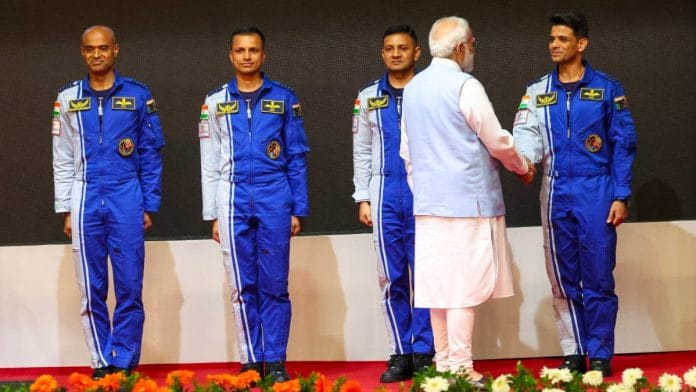New Delhi: The Gaganyaan crewed mission, which has already faced multiple delays, has been pushed back again and will likely take flight by 2027 now, Indian Space Research Organisation (ISRO) chief V. Narayanan said Tuesday
India’s first human spaceflight, the mission will launch a crew of three to low Earth orbit at a distance of nearly 400km from the ground for a three-day mission and then bring them back safely.
Robot Vyommitra will undertake the first uncrewed mission of Gaganyaan. The robot will fly to space before the astronauts, possibly by the end of this year, the ISRO chief added.
“There will be three uncrewed missions and two crewed missions between 2025 and 2027,” Narayanan said.
If successful, India will become the fourth country after the erstwhile Soviet Union, the US and China to send a manned mission into space on its own spacecraft.
First uncrewed mission
Vyommitra will go to space to test all contingencies before humans undertake the mission. Vyommitra will undertake a test flight to check safety concerns before the Gaganyaan crewed mission, ISRO scientists said.
Vyommitra, designed as India’s first woman humanoid astronaut, has a skull weighing 800 grams and measuring approximately 200 mm x 220 mm. Made of high-strength aluminium alloy, it can withstand high pressure and vibration in space.
The robot will mimic a human body and all its aspects, including responses to space travel.
The mission
Senior ISRO scientists said the space agency has made significant progress towards launching the uncrewed Gaganyaan mission. At least one test flight will be before the Gaganyaan crewed mission.
Indian Air Force test pilots, Prasanth B. Nair, Angad Prathap, Ajit Krishnan and Shubhanshu Shukla, have been training in Russian and American facilities to fly to space in 2027.
The test flights will ensure the safe travel and return of the astronauts.
“Ninety percent of the work is already finished. We are working on the final leg of the mission,” Narayanan said.
In 2023, ISRO, in collaboration with the Indian Coast Guard, completed a key recovery test, recovering the crew module from the turbulent seas of the Bay of Bengal. The launch vehicle, LVM3-X, lifted a crew module model, weighing 3775 kg, to a suborbital altitude of 126 km. The module’s thrusters helped control it, orienting the module and ensuring its safe re-entry.
“The crew module descended using parachutes to have a smooth splashdown at the designated location,” an ISRO document read.
(Edited by Madhurita Goswami)
Also Read: Why does Gaganyaan crew have no women? History shows India has no excuses






